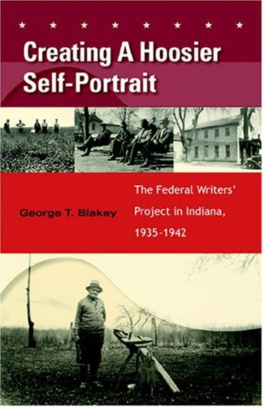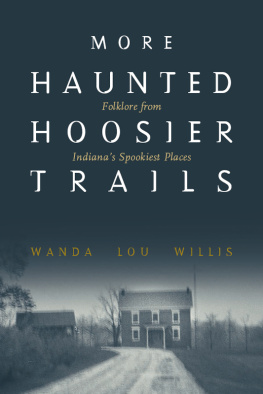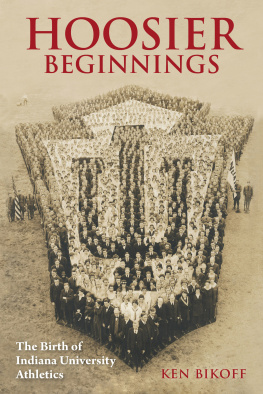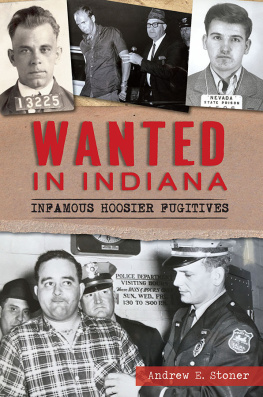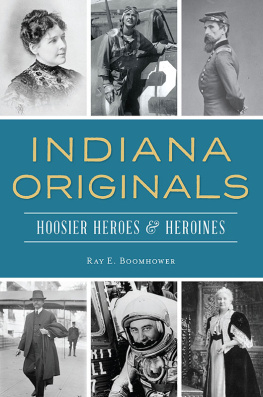CREATING A HOOSIER
SELF-PORTRAIT
CREATING A HOOSIER
SELF-PORTRAIT
THE FEDERAL WRITERS PROJECT
IN INDIANA, 19351942
George T. Blakey
This book is a publication of
Indiana University Press
601 North Morton Street
Bloomington, IN 47404-3797 USA
http://iupress.indiana.edu
Telephone orders | 800-842-6796 |
Fax orders | 812-855-7931 |
Orders by e-mail |
2005 by George T. Blakey
All rights reserved
No part of this book may be reproduced or utilized in any form or by any means, electronic or mechanical, including photocopying and recording, or by any information storage and retrieval system, without permission in writing from the publisher. The Association of American University Presses Resolution on Permissions constitutes the only exception to this prohibition.
The paper used in this publication meets the minimum requirements of American National Standard for Information SciencesPermanence of Paper for Printed Library Materials, ANSI Z39.48-1984.
Manufactured in the United States of America
Library of Congress Cataloging-in-Publication Data
Blakey, George T.
Creating a Hoosier self-portrait : the Federal Writers Project in Indiana, 19351942 / George T. Blakey.
p. cm.
Includes bibliographical references and index.
ISBN 0-253-34569-3 (cloth : alk. paper)
1. IndianaHistoriography. 2. Federal Writers ProjectHistory. 3. Writers Program (Ind.)History. 4. IndianaGuidebooksAuthorshipHistory. I. Title.
F525.2.B57 2005
977.2'0072'2dc22
2004019206
1 2 3 4 5 10 09 08 07 06 05
CONTENTS
Illustrations follow
ACKNOWLEDGMENTS
I am indebted to the following for their assistance:
Librarians and archivists at many institutions, but especially at
Library of Congress, Manuscript Division
National Archives
Indiana Historical Society
Indiana State Library
Cunningham Library, Indiana State University
New Albany Public library
Gary Public Library
Indiana University East
Miami University
Ball State University
Indiana Historical Society for travel/research grants
Indiana University East for sabbatical support and office space
Dr. Joanne Passet, an anonymous reviewer, and Indiana University Press for astute criticism and suggestions. The book is better for their contributions, but its interpretations and shortcomings are mine.
CREATING A HOOSIER
SELF-PORTRAITIntroduction
As the United States entered the Second World War in 1942 and left the Great Depression behind, literary critic Alfred Kazin published a study entitled On Native Grounds. Kazin recalled how the economic collapse of the 1930s had forced Americans to question their traditions and to search for insights into the countrys character. Aiding in this national self-analysis was the Federal Writers Project (FWP), a small part of President Roosevelts Works Progress Administration, which created jobs for the unemployed. One of the most enduring products of the FWP was the American Guide series, which reviewed the past, described the present situation, and outlined tours in each of the forty-eight states. Kazin applauded these displaced writers who went hunting through darkest America with notebook and camera to search out the land, to compile records, to explain America to itself.fruitful way of assessing the work and the legacy of the Federal Writers Project.
Approximately three hundred Hoosiers participated in this quest to search out and delineate the distinctive qualities of their states heritage and character. When Indiana: A Guide to the Hoosier State appeared in late 1941, a national critic referred to it as one of the finest of the series. Since then, it has prevailed as an indispensable source of factual information and an invaluable mirror reflecting the attitudes of the writers who produced it. To pursue the Kazin-Weisberger analogy, it was a self-portrait of a state during a decade of transition from poverty to prosperity and from peace to military conflict. These writers became unofficial historians of the Indiana past and impromptu anthropologists of the contemporary scene. As tour guides, they charted the way through fascinating ephemera and idiosyncratic sites that dotted the landscape before it was homogenized by interstate highways, chain motels, and franchise restaurants. They also produced several other publications that fleshed out the portrait and made it a fuller portrayal than the singular guide could accomplish. A regional guide of the Calumet area, a collection of folklore, a recreational guide, and a series of newspaper columns all documented and publicized aspects of the states historical activity and current conditions.
These publications featured only a small portion of the material that the FWP writers uncovered during their research. They compiled valuable information concerning such topics as racial and ethnic minorities, local histories, natural disasters, poet James Whitcomb Riley, witchcraft, indigenous foods, folklore, and gravestone inscriptions. Much of this material was the result of writers digging through local newspapers, most of which are not indexed; visiting sites, many of which no longer exist; and interviewing elderly Hoosiers, all of whom are now departed. This research in obscure sources on arcane subjects produced rich details, not available elsewhere. The bulk of their findings, unfortunately, remain in storage, unpublished and unappreciated. The Indiana self-portrait that emerges from the few official publications is a complimentary one that was edited and polished into a pleasing yet limited visage. If only the information gleaned from the unpublished materials had been utilized in the published guide. Few scholars have delved into these manuscripts since the Second World War, but their findings have enriched the states history.
As a child of the New Deal, the FWP experienced some of the same ideological criticism that was aimed at its parent. Roosevelts administration introduced various programs to combat the economic depression, and some of them frightened conservatives who felt that the federal government was drifting dangerously toward socialism. The New Deal sided with organized labor, imposed new regulations on banks and business, competed with private utilities in the Tennessee valley, and introduced welfare state programs with its relief agencies and Social Security. These same conservative critics suspected that American writers who flirted with Marxist philosophy had infiltrated the New Deal. In particular, they could be found in the Federal Writers Project. Congressional investigations in the late 1930s to ferret out radicals in the government damaged and diminished the FWP in the same manner that the Red Scare would do in the 1950s with its blacklists of political and literary radicals. These ideological purges in the 1930s can be seen less as an exposure of specific individuals and more as a general attack on the New Deal as a symbol of a federal government that had grown too large and posed too much of a threat to individualism, states rights, and free enterprise.

